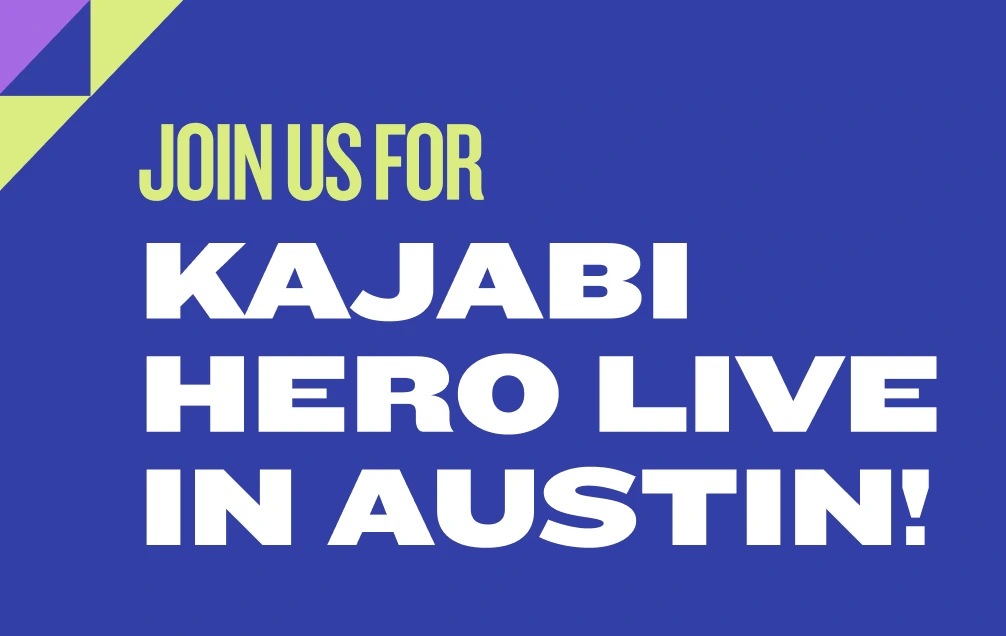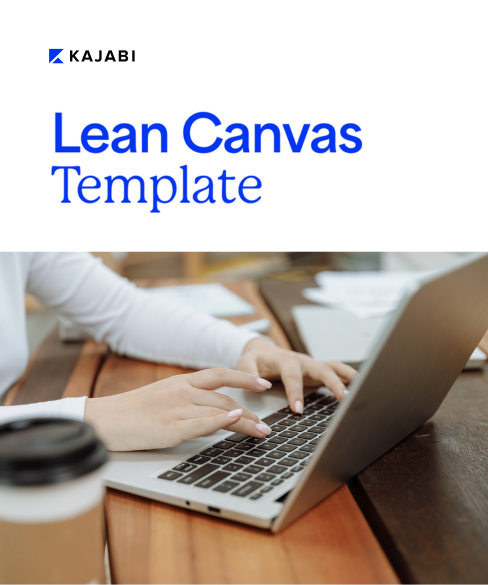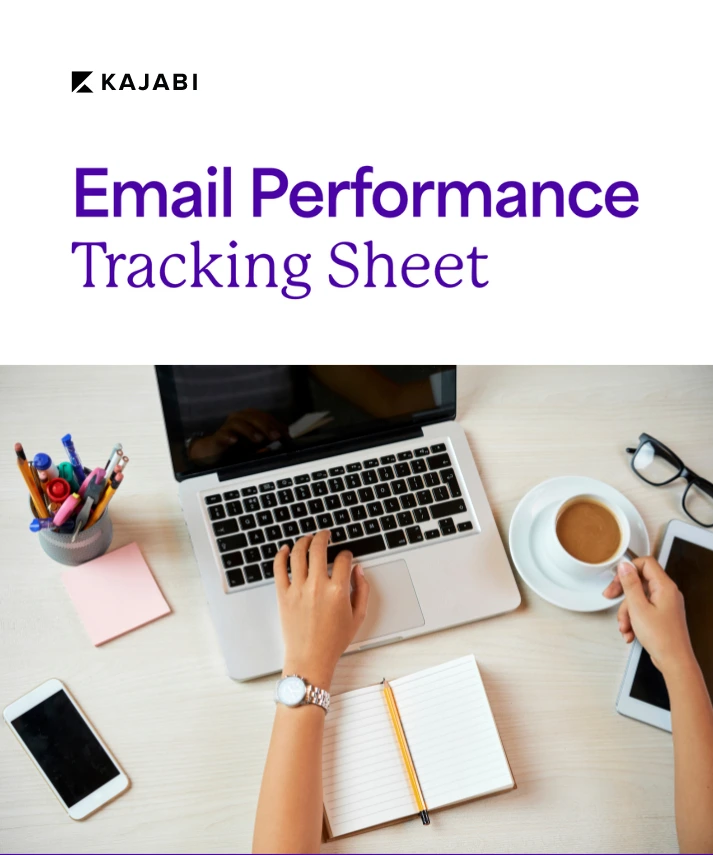
Fireside Chat: The Quest to Build Better Products by Understanding the "Job to be Done"
Get free expert insights and tips to grow your knowledge business sent right to your inbox.
Is it feeling warm and toasty in here? It must be time for another Fireside Chat!
Recently, Jay sat down with Jeremy Saenz, our newly minted Chief Product Officer, to discuss all things Product and how the game-changing "Jobs to be Done" framework has impacted the way Kajabi approaches solving problems for our customers.
How can adopting a "Jobs to be Done" mindset improve your approach as a product creator and/or a Kajabi Partner? Tune in to find out...
Here's what they cover:
- How does Kajabi figure out what customers want and need? (2:09)
- The "Four Forces" that drive consumer behavior (3:00)
- How a "Job Story" (instead of a "Customer Avatar") helps you build better products (6:04)
- What is the job that Kajabi solves for customers? (10:01)
- How can our Kajabi partners use JTBD thinking when making referrals? (14:26)
What is "Jobs to be Done," and how does it help Kajabi figure out what customers want and need?
"Jobs to be Done" (JTBD) is a framework or a way of thinking that companies use for market research.
We're not going to unpack the entire JTBD framework here (there are excellent resources for that which we'll point you to later in this article).
Instead, we're going to talk about the parts of JTBD that Kajabi uses to create a more human connection with our customers.
JTBD resists the conventional market research tactic of sorting customers into demographic categories because fundamentally, the most important thing that customers who buy the same product have in common is the "job" they've "hired" the product to do.
That's right: from the toothbrush in your cabinet to the shoes on your feet, every product you use was hired by you to do a particular job.
At Kajabi, we use JTBD thinking to put the focus on that customer job itself, instead of putting the focus on the solution (aka the product).
Focusing on the solution is what would have led Henry Ford to obsess over creating faster horses. The more innovative solution (cars) came from an understanding that the job was to get people from here to there.
In that same vein, JTBD thinking is always examining the reasons that people hire one product and fire another. These "forces" behind the switch make up one of the core concepts of the framework.
The "Four Forces" Behind Making the Switch (or not).

We don't often get opportunities to add entirely new and novel solutions to our lives.
Most often, our buying decisions revolve around replacing one solution for another.
To switch or not to switch: JTBD boils it down to four "forces" that influence people to stay with one solution or move on to the next.
First, there are two reasons you might fire what you're currently using and switch to something else:
Reason #1 to switch is the push of the present, a "not so great, could be better" situation. It's the feeling that things are frustrating and need to be improved somehow. That's what drives people to look for a new solution.
Reason #2 to switch is the attraction of a new solution. Once you're out there looking at options, those new solutions do everything they can to pull you in and show you how life will be so much better once you've made the switch.
But just as important (if not more so) are the two reasons you might stay with your current solution:
Reason #1 to stay is the anxiety we all feel when considering making a change. The fear of the unknown. Will the new solution work as promised? What if it's worse than what we were using before? It's those kinds of questions that make staying with a "known" quantity feel like the safer option, even in the face of a solution that is functionally superior and less costly.
(This is also a prime example of how buying decisions are emotional, rather than logical.)
Reason #2 to stay is one of the most powerful forces of all: the force of habit, aka the comfort of something familiar, and the pull of products and brands with which we've made an emotional connection.
It's incredibly important, as you're creating products for people or even when you're talking to people as a Kajabi Partner about switching to Kajabi, to understand these forces at play.
Once you recognize these forces, there are tools to counter them effectively.
One classic example is how companies use free trials to combat the anxiety of switching, allowing customers to develop familiarity with the product before actually paying for it.
And of course, when it comes to inspiring people to become customers and stay customers, it never hurts to build a better product than your competition.
The JTBD framework has an essential tool when it comes to that as well, called a “Job Story.”
How a "Job Story" (instead of a "Customer Avatar") helps you build better products.
Want to create a closer connection with your customers by understanding how they actually use your product?
It might be worth replacing your "Customer Avatar" with a "Job Story."
A Customer Avatar seeks to understand a particular market better by creating a profile based on several different factors, from broader demographic categories like age and gender, down to favorite color or flavor of ice cream.
While these avatars do help us understand customers, a Job Story has the upper hand when it comes to designing a better product that will withstand competition.
Job Stories help product creators by laying out the context and motivation behind a customer's hiring decision in a way that Customer Avatars don't.
Here's the anatomy of a Job Story:

While it seems simple (and it is), this structure helps you break down the essential elements of understanding customer behavior.
First, a Job Story examines the context of a situation where a customer needs a solution. We ask not only what is happening, but what they are thinking, feeling, and struggling with at the time.
In this way, a Job Story narrows down from the broader swaths of who a customer is (a 35-year-old single mother) into who they are in a crucial moment when they're looking for help (someone late for work who needs a quick and convenient breakfast).
Next, a Job Story examines the forces of motivation. We look at the functional goals that motivate their actions (eat a quick and filling meal) and the more significant emotional and social goals they wish to accomplish (be energized for a busy day).
The Job Story structure distills this specific situation, with all of its context, motivations, and outcomes, into a single sentence that guides both product development and marketing teams to make better decisions.
It's this kind of thinking that helped fast-food chains realize that customers who were looking for a quick breakfast on-the-go were choosing milkshakes as a solution over their traditional breakfast items because of the milkshake’s caloric density and the ease of drinking them in the car.
By fully understanding the "job" first (calorie-dense, drinkable breakfast) before trying to brainstorm new solutions, the better product idea was obvious: coffee-flavored milkshakes.
Your own "obvious" solution might be waiting behind a Job Story. Check out this handy worksheet to find it:
[PDF Download - Find Your Job Story]
How does Kajabi use Job Stories?
When we think about the reasons customers use and love Kajabi, Job Stories help us see the bigger picture.
It's not just "I'm switching from Wordpress/Clickfunnels/Teachable/etc." or "I'm looking for less frustration around tech," (even though we hear those things a lot).
By getting specific about the job customers are hiring us for, we begin to see that it's a lot more than that.
It's the new parent who wants to run their business from home so that they can experience more significant moments with their kid.
It's the freedom-seeker who wants to earn a healthy income without being tied down to any one location.
The JTBD framework helps us focus in on the "better self" outcome of the customer, i.e., the expert who goes from traveling 40 weeks out of the year for speaking engagements to scaling their best training into a digital product business that they can run from wherever they please.
Not only do Job Stories like these give us the insight we need to build and market better products, but they inspire us. They get us up in the morning. They form the backbone of our mission.
What is the job that Kajabi solves for our customers?
It's no secret: Kajabi does A LOT of jobs.
But instead of boiling Kajabi down to all the different features and functions, we explain it this way:
Kajabi exists to build and scale your digital product business.
That's the core job that we're solving for. We're here to support entrepreneurs, experts, and influencers from the beginning of their business all the way to when they scale to 8 figures and beyond.
With this "Job" in mind, we can then better understand what makes people join or switch to Kajabi.
Our customers often come to us in one of two contexts:
- When they have expert knowledge that they want to monetize by starting a digital products business.
- When they already have an online business, but it’s become too frustrating to run because it relies on a stack of tech tools pieced together.
This is how the four forces referenced above come into play. The push of the present situation (need for a scalable, frustration-free business) and the attraction of a solution (Kajabi's convenience and ease-of-use) inspire the switch.
In both cases, these customers see how their desired outcome (freedom, location independence, etc.) can be achieved faster and easier with an all-in-one solution like Kajabi.
How has Kajabi used the JTBD framework to inspire 2020 product updates?
Based on customer feedback and the Job Stories we've been able to distill from it, 2020 for Kajabi is all about inspiring confidence and building community.
Our recent pages launch serves as a rubric: We wanted to change the state of online business owners who felt like slaves to their Wordpress sites and developers.
As an outcome, we've now got many more users who now feel confident that Kajabi can support all of their page-building needs.
In 2020, we'll be using Job Stories to perform the same kind of improvements in other areas of our product.
Next up on deck is Kajabi Email. Stay tuned for updates to come in a matter of weeks!
How can our Kajabi partners use JTBD thinking when sharing and referring Kajabi to their community?
When we look at our most successful Kajabi Partners, we notice they all have one thing in common: a strong connection with their audience.
JTBD thinking can help to develop that connection into a deeper understanding of what situations your audience is currently struggling with, and what jobs they are hiring for.
Use Job Stories and don’t forget to download the Job Story Worksheet to examine the context of your audience's situation, their motivations, and their desired outcomes.
Remember: Seek to understand the job first, before trying to provide a solution.
Don’t limit your thinking to just one solution. Be responsive to your audience’s needs, even if Kajabi isn’t what they need at that moment. Support them with relevant information about Kajabi that helps them evaluate if it's the right solution at this point in their business.
Nurture the connection first. Even if they’re not ready for Kajabi now, it could be the right solution for them further down the line.
As you continue to grow your audience and develop new Job Stories, you’ll be surprised by the creative ways people use products and reach new outcomes.
Never stop listening, because behind those new stories could be the next “obvious” solution that leads to your next successful digital product or referral.
That’s it for this Fireside Chat!













